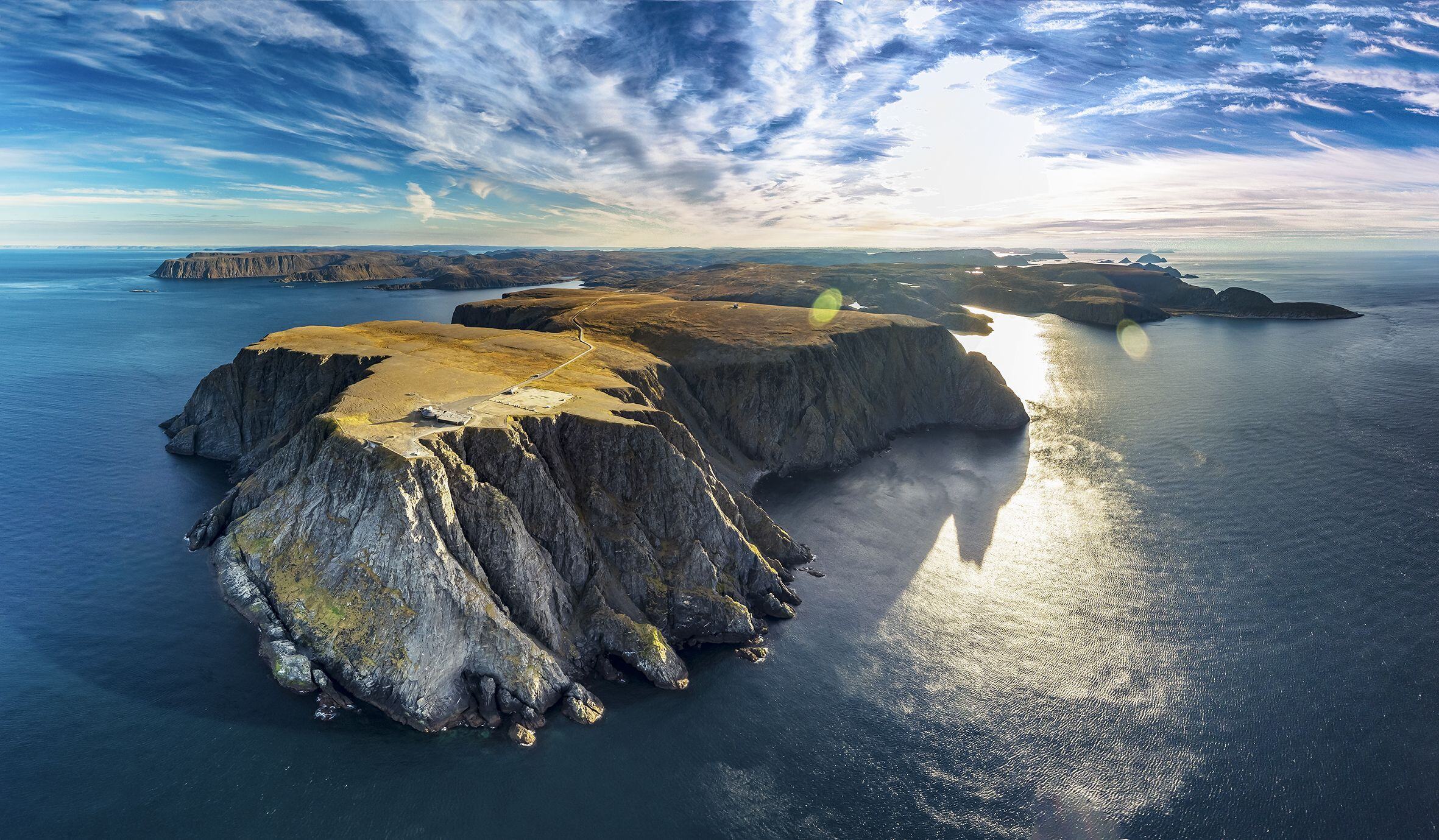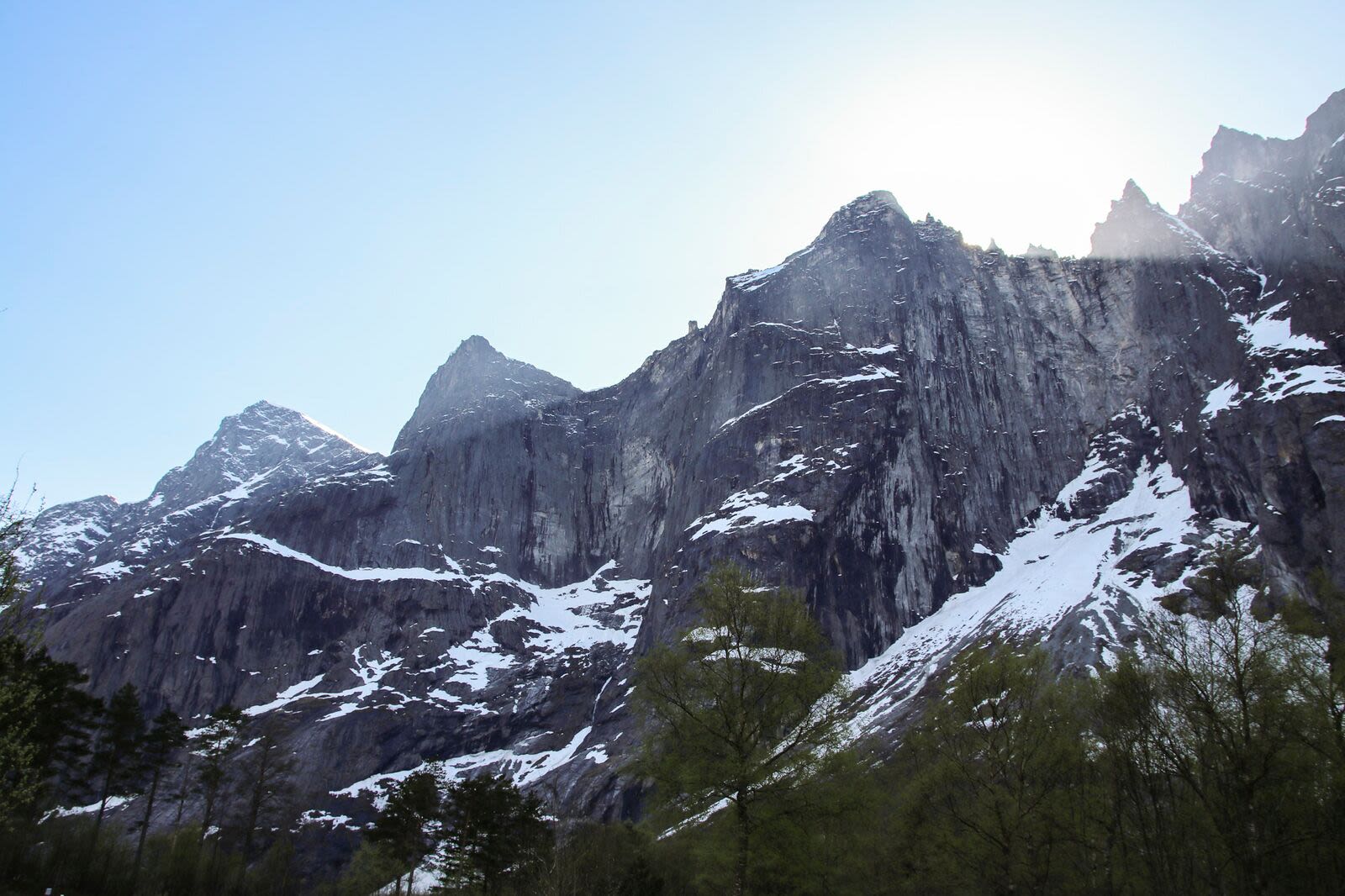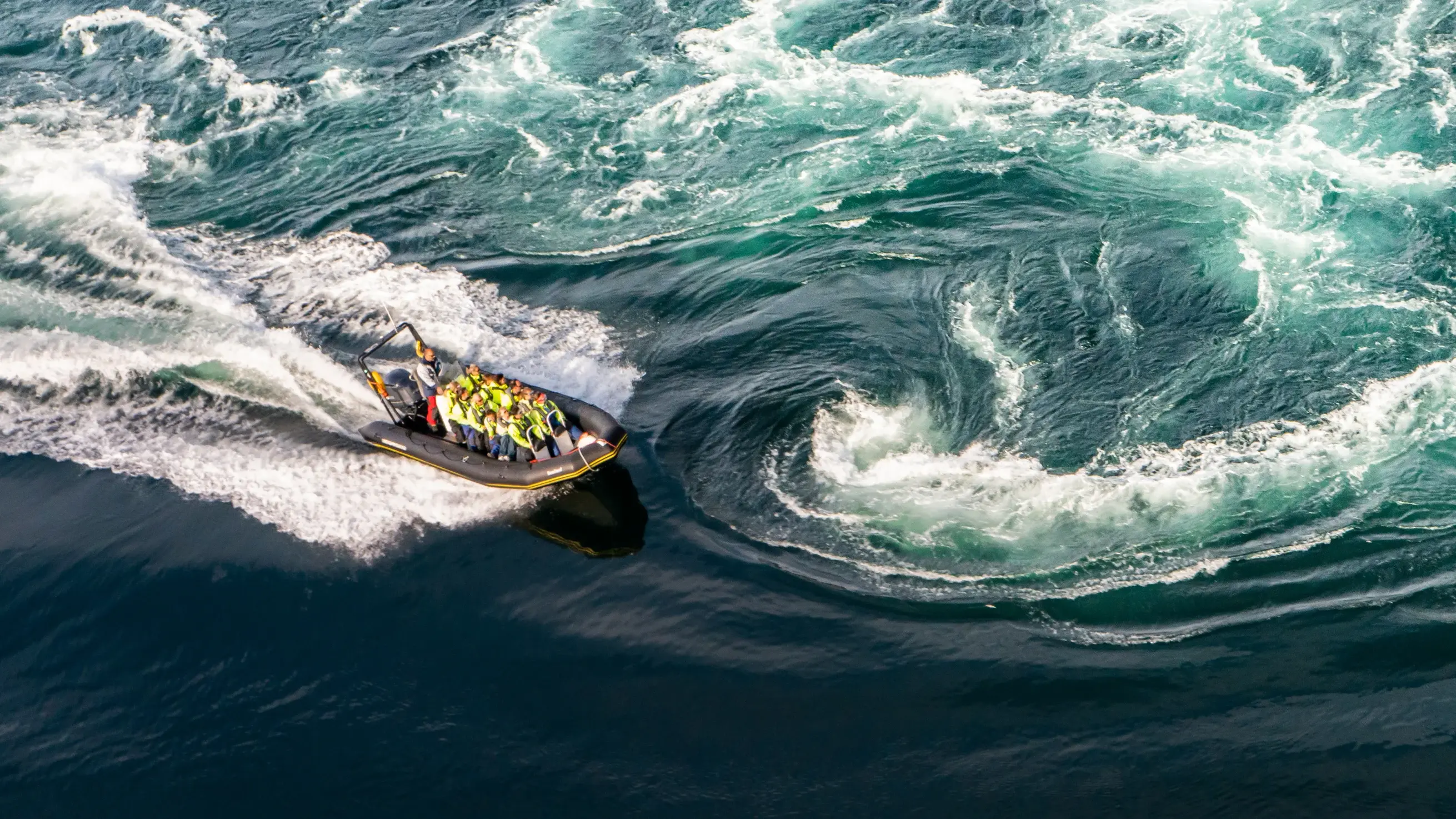Trondheim
A Walking Tour Full of Surprises
Though it was late to bed last night, after a long day of touring, I wake up early and head for the Havila Capella’s Havrand restaurant. Only a few people are here, and I find a table by the window. Last night’s raindrops still cling to the large panes of glass, and a grey mist hovers over the calm sea. Here and there, where the sun penetrates the fog, rays of gold and pink radiate across the water. The view is breathtaking, reminding me of an Impressionist painting. I’m stunned to think that I have lived in Norway my entire life and never experienced such a magical scene before.
When I finally take my attention to the menu, I choose a “Green Breakfast.” It’s a featured dish – included in the first of four regional menus the ship will offer as we proceed up the coast. Thinking it will be small, and I’m very hungry, I also order several other items from the standard menu.
The Green Breakfast, however, is actually three courses: toast with mushrooms and fried tomatoes; oatmeal with milk and berries; and an interesting green drink. It is delicious!
With all the other items I’ve also ordered from the standard menu, I wonder how am I going to finish it all and not interfere with Haliva Voyages' goal of reducing food waste by an average of 75 grams per guest. It’s a huge problem for those large cruise ships, but the company is close to achieving this almost impossible feat.
I’m looking forward to today’s excursion. I’ve never had a guided tour or seen Trondheim through the eyes of a tourist. I wonder if there will still be surprises in store for me.
It doesn’t take long to find out.
The first occurs as we step off the ship and meet Rossana Pinca from Trøndelag Guide Team. For the second day in a row, our guide is not Norwegian. Rossana is an Italian who’s lived in Norway for the past four years and speaks fluent English.
Rossana tells us the walking tour will cover only the center city since we only have 2 ½ hours before our ship sails again to our next destination.
As we stand on the wharf, Rossana points to Munkholmen, a small island in the fjord.
We walk a few hundred meters further to a tall statue of the Norse explorer, Leiv Eriksson.
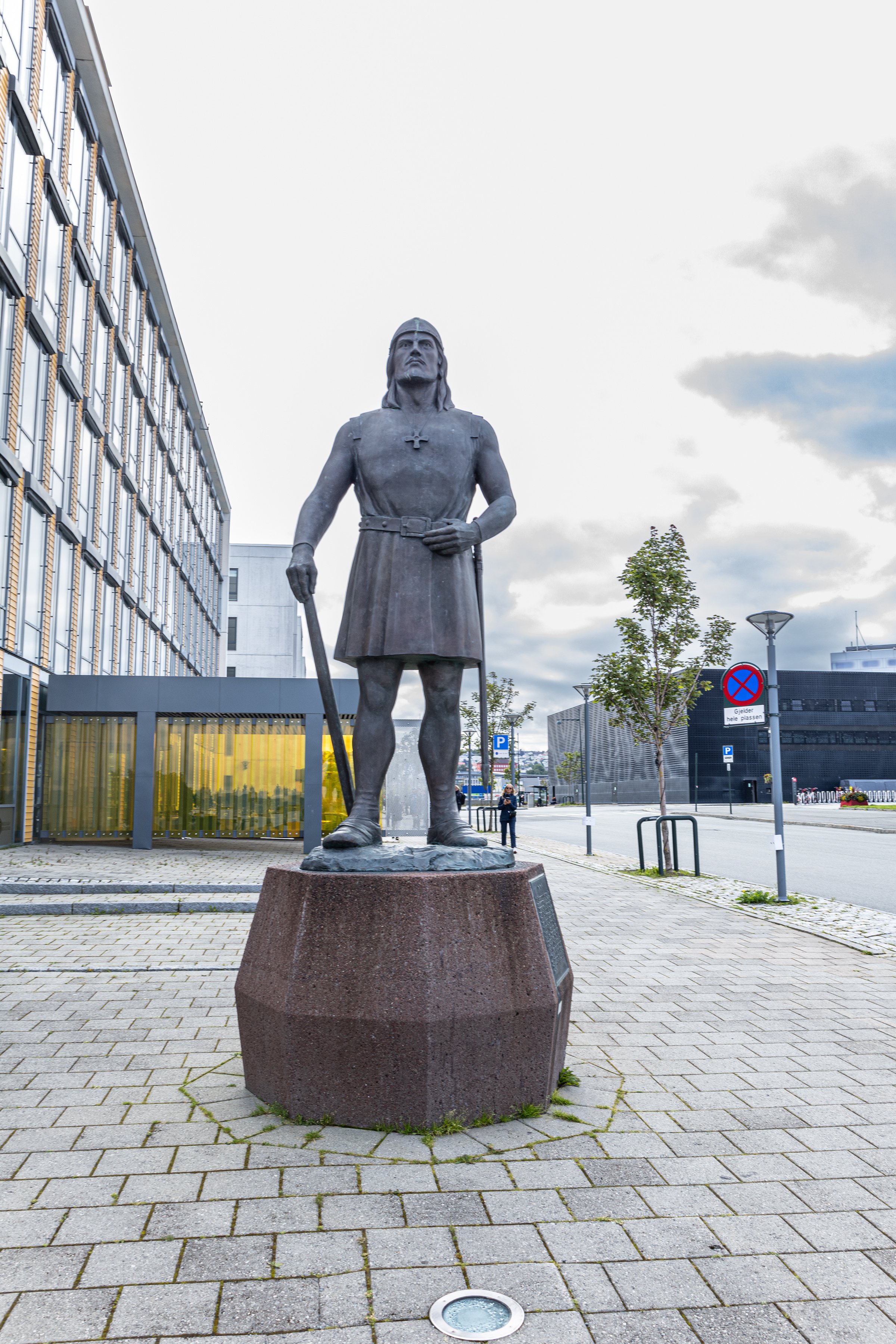
Statue of the Norse explorer, Leiv Eriksson.
Rossana smiles. “When I moved to Norway and learned that the story about Christopher Columbus discovering American wasn’t true, I was quite surprised.
“It wasn’t the Italian Columbus, but rather the Norwegian Leiv Eriksson who was the first European to discover America around the year 1000,” she says. “He traveled from the port in Trondheim, searching for an adventure. He was a friend of (the king) Olav Tryggvason.”
Then, another surprise: Our guide asks if there are any Americans among us. A small boy with long, dark hair raises his hand. He, his parents, and his older brother are from Seattle.
That’s a funny coincidence, our guide replies. because the statue we are admiring was a gift from The Leif Erikson Society in Seattle. It was given to the city of Trondheim in 1997, in commemoration of the 1000th anniversary of Trondheim and Eriksson’s journey to America.
A short distance away is Rockheim, the national museum for popular music. Once a grain warehouse, the museum is quite an eye-catcher. The 3,400 square meter building (36,000 sq ft) offers a journey through Norwegian music from the 50's to the present day.
As we study the outside facade, adorned with pictures of Norwegian musicians through the past 70 years, we are suddenly surrounded by what seem to be pirates, princesses, and monsters in the most colorful costumes imaginable. Near me is a sea creature from “Pirates of the Caribbean” and someone with wild curly red hair and a matching tie. The crowd grows as more and more characters assemble at the front entrance of the Rockheim. The scene is festive.
“What’s going on?” I ask our guide.
Rossana isn’t quite sure, but her guess is that we are witnessing a Cosplay gathering, a combination of “costume” and “play". It’s a hobby for people who like to dress up as characters from movies, games or books. Many make their own elaborate costumes.
Our group has moved on, but my curiosity leads me to ask three of the amusing characters if it’s true they are part of Cosplay. They nod yes and are happy to have me take their picture.
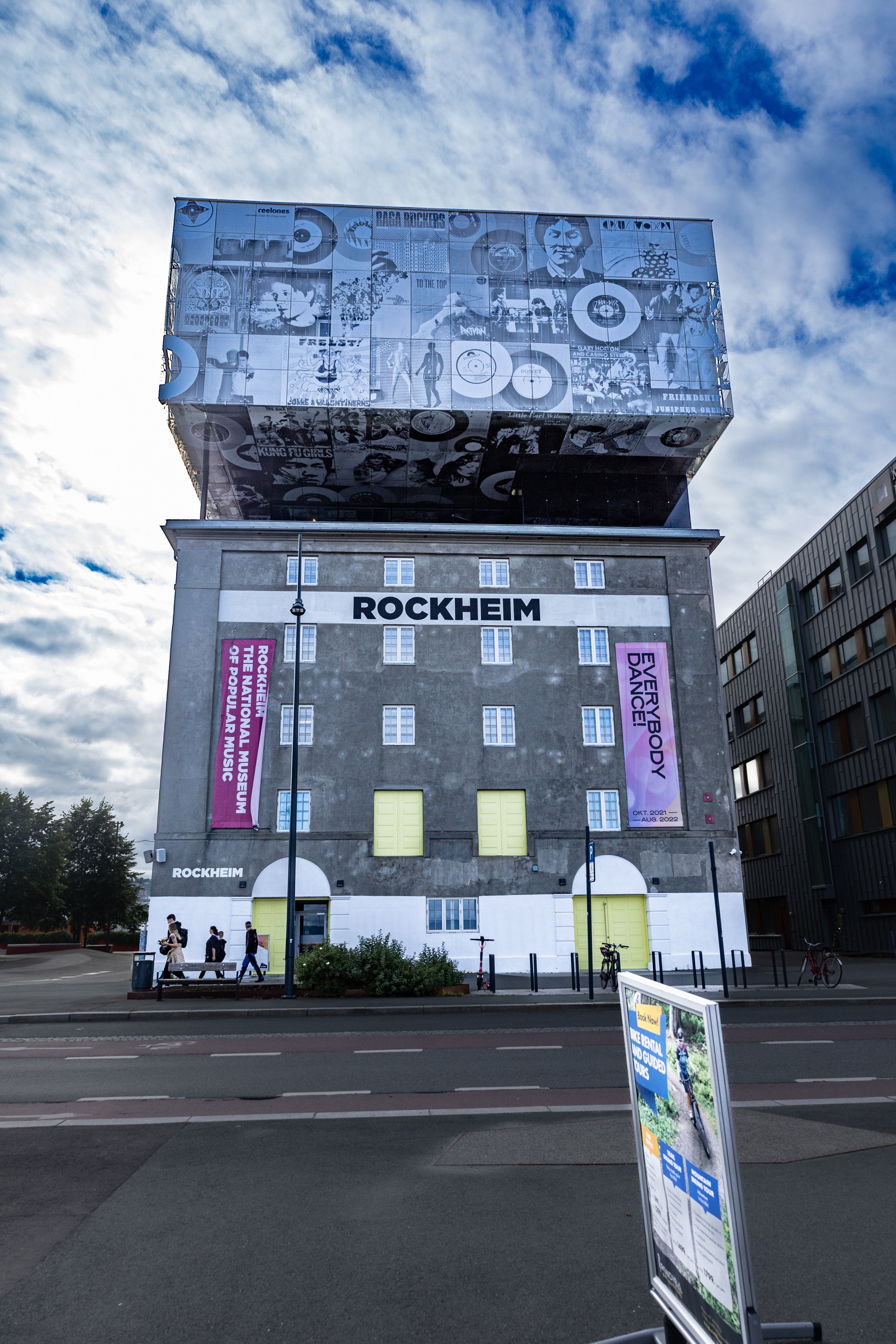
Rockheim
The first stop in the city center is on the bridge by the marina. Rossana is pointing toward a large green area called Bymarka. It’s a huge park and nature reserve just west of the city.
“This reserve has so many streams that I’ve lost count", she says, “And it holds almost 400 species of animals.”
During wintertime, there are illuminated trails and ski tracks in the reserve. In the summer, there’s a golf course, several lakes, and a rich bird life.
Rossana explains that the flexibility in Norwegian working life allows people to take advantage of the many outdoor activities that Bymarka, and other reserves, offer.
“Most Norwegians can choose whether they want to start their working day early, or come to the office a little later", she says.
Occasionally, it’s perfectly fine to end the day at 3 pm for a walk in Bymarka. It doesn’t matter if it’s summer or winter.
We continue to Trondheim’s official royal residence, Stifgården.
The 4,000 m2 (43,000sq ft) home has around 140 rooms and many, many windows.
Photo: Diego Delso, delso.photo, License CC-BY-SA
On closer look, however, there’s another surprise. It turns out that many of the windows are not real: They’re painted.
The owner, Cecilie Christine Schøller, a wealthy widow, wanted to have a house like the magnificent, classic buildings she knew in Copenhagen. To achieve that effect, she had to create artificial windows.
The house was part of a competition to decide who in Trondheim could build the most spectacular house.
“I like to describe Cecile Christine Scholler as the “Kardashian” of her time,” Rosanna grins.
“Cecile didn’t even live in the house. When it was finally completed, she decided that Trondheim was too provincial for her, so she moved to Copenhagen. The house was given to her grandson, who eventually could not afford to keep it. He sold it to the state.”
Since then, Stifgården has been used for many different purposes. When Norway became independent in 1905, and the Danish prince Haakon became king of Norway, the house was given to the royal family.
Time is running. We stop briefly at the famous Nidaros Cathedral, the resting place of the
Viking saint, Olav Haraldsson.
After a walk inside, we meet our guide, who points to the St. Michael statue, standing on the northwestern tower.
When it was in need of repair in the late 1960s, she tells us, the artist remade its face to resemble his idol, Bob Dylan.
“This was during the Vietnam War, and Dylan sang protest songs against nuclear weapons,” Rossana says.

Photo: Morten Dreier
During one of our last stops before returning to the Havila Capella, we admire the Gamle Bybro (old city bridge). It was first built in 1685, after 95% of Trondheim burned (in 1681).
The bridge was rebuilt with its elaborate red portals, in 1861. According to our guide, it’s one of Norway’s most photographed attractions.
In our last minutes we fit in a few more points of interest.
What a tour. As much ground as we traveled, I realize that Trondheim has surprises still to reveal. I look forward to returning.
Tomorrow, a completely different kind of adventure awaits us. I’ll be going on a guided RIB (Rigid inflatable boat) safari to Saltstraumen, the strongest maelstrom in the world, and then on to see the sea eagles, in Bodø.
Other Excursions in Trondheim
You can read more about this specific excursion here.
Trondheim and the Nidaros Cathedral, northbound
Trondheim with its small-town charm and colourful, old wooden houses from the 17th century, is also home to modern sports facilities, educational and research institutions and a lively nightlife.
Trondheim and the Nidaros Cathedral, southbound
Trondheim with its small town charm and colourful, old wooden houses from the 17th century, is also home to modern sports facilities, educational and research institutions and a lively nightlife.
Trondheim by vintage tram
Get on the world's northernmost tram, and travel 8.8 km on narrow tracks from the centre of Trondheim out into the suburbs and then take the bus for the last stretch to Lian.
City cycling in Trondheim
Cycling in Trondheim, you reap the benefits of Trondheim's efforts to become one of the most bicycle-friendly cities in Norway. The city's streets have five kilometres of red bicycle lanes, and on the excursion from the Havila Voyages ship along the quay you will also get to test the city's new bicycle bridge.


